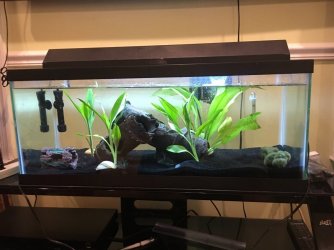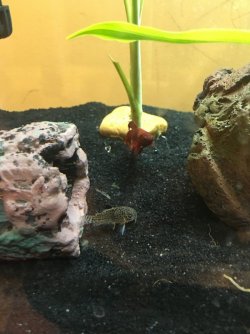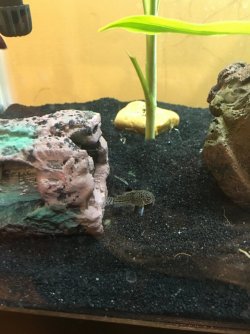plus it's very expensive
okay so let's say this doesn't work is there anything else I could use instead of play sand?I would not waste your money on this. I did my 70g tank with black Flourite on the advice of members on another forum; it turned out to be quite rough (not in my hand, but obviously this is no way to tell) and within a couple of weeks I had to remove the cories due to barbel degeneration and one panda even lost about 1/3 of its lower jaw. They all recovered in another tank with play sand, and today, some 8 years after this occurred, I still have the cories including the panda with part of its mouth missing, comical to look at but it obviously is able to eat or it wouldn't still be with me.
The other thing is that Flourite does not improve plant growth any more than inert sand with plant additives. After two years, I tore the tank down and dumped the Flourite in the back garden. Complete waste of money. The same plants have in the subsequent 6 years grown just as well with sand and substrate tabs/liquid supplement.
There is nothing detrimental with play sand. It is extremely safe for all fish, plants grow well in it, it looks natural, and it is inert. On top of all that, it is the least expensive sand substrate you can get. Other inert aquarium sands are OK, but much more expensive.




